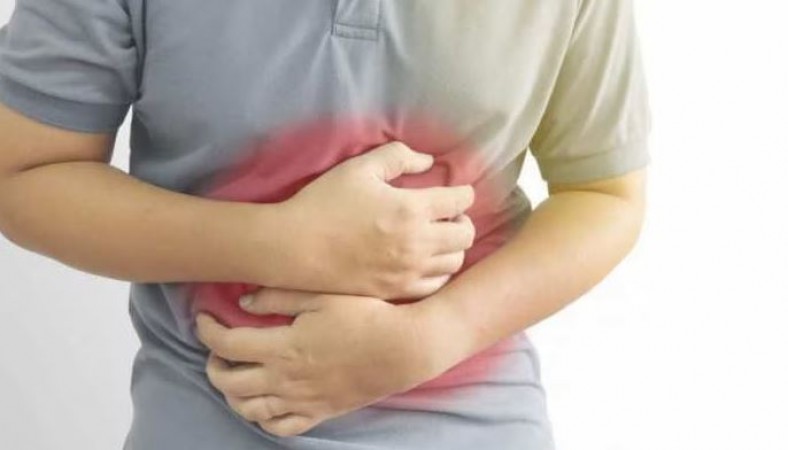
Abdominal pain is a common medical complaint that can range from mild discomfort to severe and debilitating pain. It refers to the discomfort or distress experienced in the area between the chest and pelvis and can manifest as a dull, achy sensation or sharp, stabbing pain. While most cases of abdominal pain resolve on their own over time, in some situations, it can be a sign of a more serious underlying condition. This article will explore the various types and causes of abdominal pain and discuss treatment options.
Types of Abdominal Pain:
Abdominal pain is categorized into three main types based on its severity and duration:
Acute Pain:
Acute pain is intense and typically lasts for hours or days.
It may be accompanied by symptoms such as fever, diarrhea, and vomiting.
Common causes of acute pain include gastroenteritis, appendicitis, kidney stones, and intestinal obstruction.
Chronic Pain:
Chronic pain is persistent and can last for weeks, months, or even years.
It may come and go intermittently.
Conditions like irritable bowel syndrome (IBS), inflammatory bowel disease (IBD), and endometriosis can lead to chronic abdominal pain.
Progressive Pain:
Progressive pain worsens over time and is usually associated with other symptoms.
It often indicates a more serious underlying condition.
Examples include gastrointestinal cancers, chronic pancreatitis, and certain autoimmune diseases.
Common Causes of Abdominal Pain:
Abdominal pain can be attributed to various factors and underlying conditions. Some of the most common causes include:
Gastroenteritis (Stomach Flu):
Gastroenteritis is an infection caused by viruses or bacteria that inflame the stomach and intestines.
Symptoms include abdominal pain, nausea, vomiting, diarrhea, fever, and dehydration.
While symptoms typically improve within a few days, persistent symptoms may indicate a more severe infection or inflammation.
Food Intolerance:
Some individuals may experience abdominal pain due to food intolerances, such as lactose intolerance or gluten sensitivity.
Consuming certain foods can lead to gas, bloating, and abdominal discomfort.
Irritable Bowel Syndrome (IBS):
IBS is a chronic gastrointestinal condition characterized by abdominal pain and altered bowel habits.
It can be triggered by specific food items or stress.
While IBS does not cause structural damage to the digestive tract, it can significantly impact a person's quality of life.
Gastroesophageal Reflux Disease (GERD):
GERD occurs when stomach acid flows back into the esophagus, causing heartburn and abdominal discomfort.
Long-term untreated GERD can lead to complications such as esophageal ulcers and strictures.
Gallstones:
Gallstones are solid particles that form in the gallbladder and can cause severe abdominal pain.
Pain often occurs after a fatty meal and can radiate to the back or shoulder blades.
Surgical removal of the gallbladder is a common treatment for gallstones.
Constipation:
Chronic constipation can lead to abdominal pain and discomfort.
When stool accumulates in the colon, it can cause bloating and cramping.
Adequate hydration, dietary fiber, and lifestyle changes can help alleviate constipation.
Inflammatory Bowel Disease (IBD):
IBD encompasses conditions like Crohn's disease and ulcerative colitis, which involve chronic inflammation of the gastrointestinal tract.
Abdominal pain, diarrhea, and weight loss are common symptoms of IBD.
Treatment often involves medication and dietary modifications.
Peptic Ulcers:
Peptic ulcers are sores that develop on the inner lining of the stomach or the upper part of the small intestine.
They can cause burning abdominal pain, nausea, and vomiting.
Infection with Helicobacter pylori bacteria is a common cause of peptic ulcers.
Appendicitis:
Appendicitis occurs when the appendix becomes inflamed and can lead to severe, localized abdominal pain.
Prompt surgical removal of the appendix is necessary to prevent rupture and complications.
Urinary Tract Infection (UTI):
UTIs can cause abdominal pain, especially if the infection spreads to the kidneys.
Symptoms may include pain during urination, frequent urination, and fever.
Endometriosis:
Endometriosis is a condition where tissue similar to the uterine lining grows outside the uterus.
It can lead to pelvic pain, heavy menstrual periods, and abdominal discomfort.
Kidney Stones:
Kidney stones are hard mineral deposits that form in the kidneys and can cause intense flank pain radiating to the abdomen.
Treatment may involve pain management and sometimes procedures to remove or break down the stones.
Hernias and Cysts:
Hernias occur when an organ or tissue pushes through a weakened area in the abdominal wall.
Cysts, such as ovarian cysts, can cause abdominal pain if they rupture or become enlarged.
Pancreatitis:
Pancreatitis is inflammation of the pancreas and can cause severe abdominal pain, often radiating to the back.
It is commonly associated with alcohol consumption and gallstones.
Celiac Disease:
Celiac disease is an autoimmune disorder triggered by gluten consumption, leading to damage to the small intestine.
Abdominal pain, diarrhea, and malabsorption of nutrients are hallmark symptoms.
Diverticulitis:
Diverticulitis occurs when small pouches in the colon become inflamed or infected, resulting in lower abdominal pain.
Treatment may involve antibiotics and dietary modifications.
Pelvic Inflammatory Disease (PID):
PID is an infection of the female reproductive organs and can cause lower abdominal pain.
It often results from untreated sexually transmitted infections.
Ovarian Conditions:
Conditions like ovarian cysts or ovarian torsion can lead to abdominal pain in women.
Treatment depends on the specific condition and its severity.
Gynecological Conditions:
Conditions such as endometriosis, fibroids, and adenomyosis can cause pelvic and abdominal pain in women.
Cardiovascular Issues:
In rare cases, heart-related conditions like angina or aortic dissection can manifest as abdominal pain.
Referred Pain:
Sometimes, pain originating from organs in the chest or back can be referred to the abdomen, leading to confusion in diagnosis.
Diagnosis and Treatment:
The diagnosis of abdominal pain involves a comprehensive evaluation of the patient's medical history, physical examination, and often, additional diagnostic tests. These tests may include blood tests, imaging studies (such as X-rays, ultrasound, CT scans, or MRI), endoscopy, and colonoscopy. The choice of diagnostic tests depends on the suspected underlying cause.
How to Boost Your Energy and Mood During Menstruation: Nutrition, Hydration, Exercise, and More